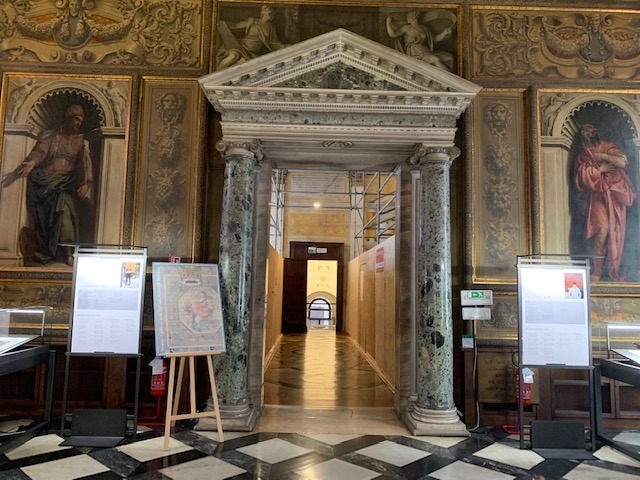Biblioteca Marciana
Biblioteca Marciana is a true masterpiece in every aspect. An awe-inspiring architectural jewel with so much history and importance that is very hard to fit in one snippet of a text. But let’s make an effort. In 1468, an important Greek scholar and leading humanist who had fled to Italy a few years before the fall of Constantinople, Basilios Bessarion, presented to the senate of Venice his precious collection.
About a thousand Greek and Latin manuscripts, books, and prints. Bessarion saw Venice as the successor of the Byzantine Empire and a future library in the Italian city as a possible cultural treasure trove which could be used by the Greeks who had lost their home country.


His generous donation would set in motion the project for a public library worthy of the donation and the city’s new role as the leading capital of the Eastern Mediterranean. He would not live to see the onset of the works carried out right in front of the western facade of Doge’s Palace in 1537.
Architect Jacopo Sansovino would undertake the task along with the rearrangement of its outer space that led to the unification of the two squares, (the Piazza and the Piazzetta of San Marco) and the construction of the Loggetta at the base of the Campanile. He had already been appointed by the council of Ten as the chief architect of the adjoining new mint (Zecca) in 1535.


As in all of his works Sansovino would infuse the Renaissance spirit in a pure classicist structure that is lined with a series of Doric (ground floor) and Ionian (first floor) columns. Its roof, adorned with Greco-Roman style statues and large Roman obelisks on the corners, stays true to Bessarion’s and the Senate’s initial plan for a complex that would “emulate the ancients”.
The interiors of the library are equally impressive with some of the giants of painting art like Titian, Tintoretto, and Veronese having contributed to the greatness of the place with their works. Further donations and bequests, acquisitions of portions of other libraries, mostly from monasteries, and most of all the law of 1603 that obliged all printers to donate one copy of every book they published to the library, soon made the content more important than the opulent shell.


Together with the adjoining, austere Doric economic temple of Zecca, also part of the library today, the two buildings by Sansovino managed to emit all the confidence and optimism of 16th-century Venice. Both buildings are open for visitors and open from morning to evening on the weekdays and from 8.00 am to 1.30 pm on Saturdays. More




